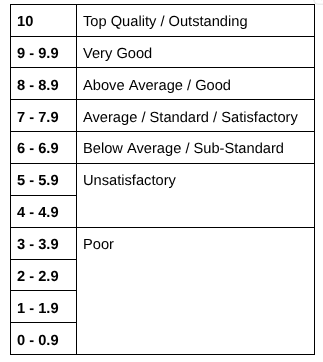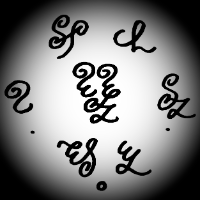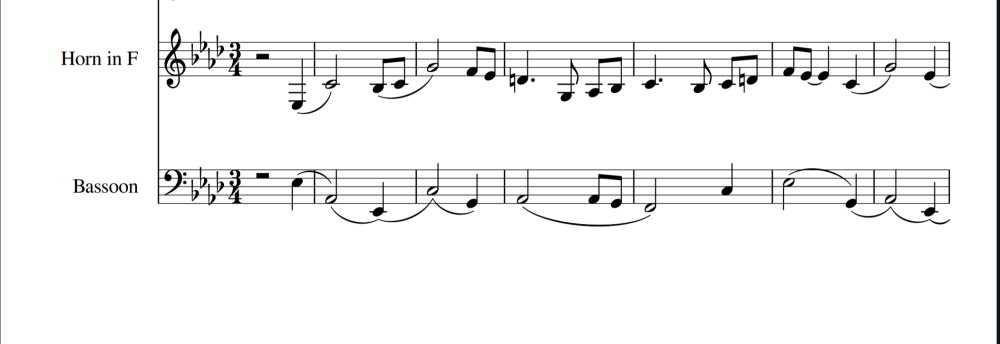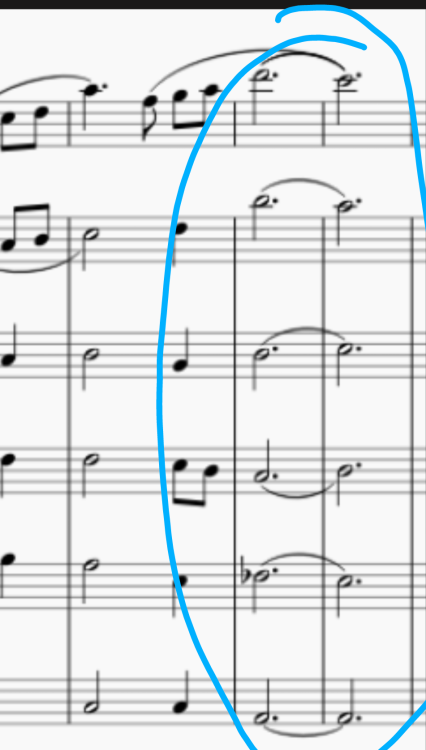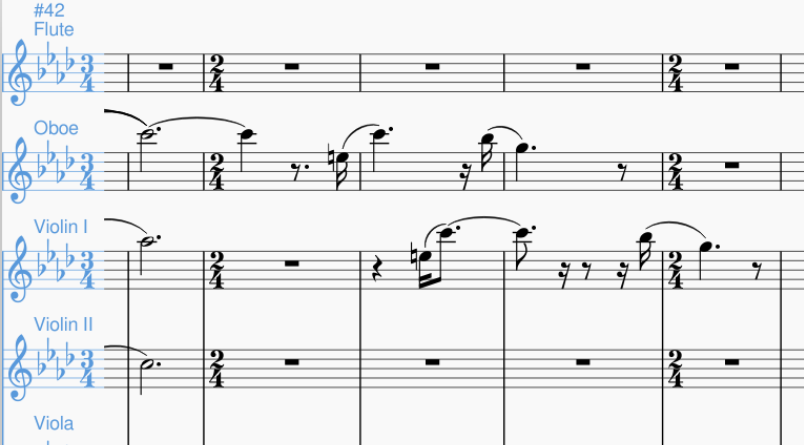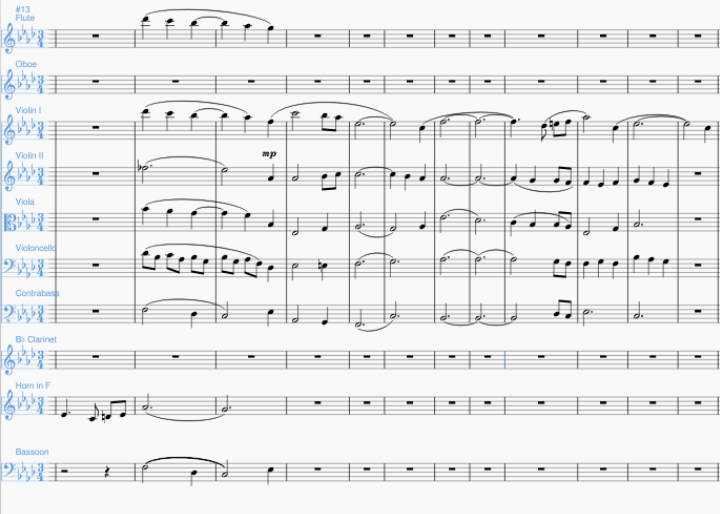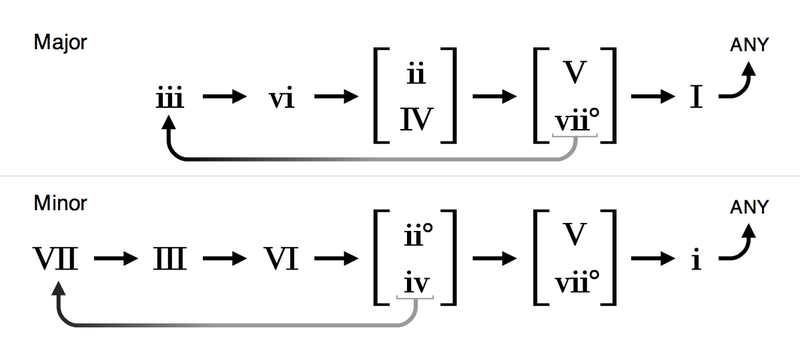Leaderboard
Popular Content
Showing content with the highest reputation on 10/10/2025 in all areas
-
Hello everyone, I’d like to share my piece Fumage for flute, oboe, and bassoon as my submission for the Fall 2025 Halloween Competition. 🎃 About the Piece Fumage is inspired by the surrealist art technique of the same name, where smoke from a candle or lamp leaves ghostly, shifting impressions on paper. This piece takes that imagery into sound, with wisps of timbre, sudden bursts, and eerie colorations from the woodwinds. It mirrors candlelight, smoke, and the blurred line between reality and apparition—an atmosphere that fits the surreal and haunting spirit of Halloween. Instrumentation: Flute, Oboe, Bassoon Duration: ~7 minutes Score (PDF) Audio (MIDI) Thanks for listening and I welcome any feedback! –– Justin Gruber2 points
-
This one was intended as a kind of character piece. Honestly, I was watching the new season of Wednesday Addams and the music from the show inspired this. LoL There's dynamics in this that hopefully a Clavichord would be better able to perform. Thanks to @Alex Weidmann for his input about how to get the Violin to play classic phrasing rather than portamento! I would appreciate any kind of feedback, comment, critique, suggestion or observation that you may have. Thanks for listening and I hope that you enjoy!2 points
-
Hello again, my friends. Here is the latest sonata in Binary form that I’ve written. From a technical point of view, I believe it’s my best one, and I feel quite happy about it. Musically, like every piece, it’s different and has its own beauty. I hope you like it.2 points
-
I'm glad you did! For me, I was going to have those reactions anyway, but obviously I'll have a different perspective. It's great we get to share potential reasons for feeling differently. Don't get me wrong; it's an incredibly smooth little sequence! It's actually possible that I thought it almost needed to stand out more, in a way, you know? Like the character is so different I might have wanted to hear it be a little wilder to reinforce that in my brain, you know? Not entirely sure. Kudos, again. Lovely stuff.2 points
-
First of all, thank you so much for taking the time and care to listen to my work so attentively — I truly feel grateful for that. I’m really glad you liked it and appreciated the effort I put into it. Also, thank you very much for your feedback. If you’d like, I can share my own perspective on the points you mentioned. At 2:40, since there was a modulation to B major with the initial theme — and because of its nature, it didn’t really lead anywhere — the only way forward was through a series of modulations, starting with C-sharp minor. Then somehow, in a dynamic way, I had to wage a sort of “battle” of modulations to find my way back to the tonic. From my point of view, that section is actually one of my favorites; it just felt like it needed to happen that way. At 2:49, I wanted to keep that drone note more as a timbral element and to add a more dramatic texture due to the constant alternation between major and minor. From a technical standpoint, you could say it’s nothing particularly special — it’s really more about the color I wanted to convey. In general, I truly enjoy hearing everyone’s perspective and how each person approaches the piece with their own unique viewpoint — it’s very interesting. Once again, thank you, my friend, for your kind words and appreciation. Wishing you all the best!2 points
-
Wow, this is so pretty! I think my favorite thing about this are all these little moments that play with different dissonances: a. 0:21 holding onto the 7th into the EEC, b. 0:49 on the French 6th, technically resolving to V, bit leaving immediately after the silence. c. 3:32 holding onto fi. Maybe not unique per se, but treated with such a light touch that they really pop here! Good job! Only a couple sections I felt were a bit of a bigger change: 1. 2:40's sequence felt a little odd to me for some reason. It's a big moment, for sure, but maybe the sequence was just so rhythmically formulaic that it contrasted the unpredictable pleasantness of the rest of the piece enough to be marked for me. 2. 2:49's repeat of the low octave feels a little heavy-handed as well, but I get that you want to make the home key a little stronger after all the work you put into modulating. 3. Right at the very end, just a personal taste kinda gripe: going from 8 to 3 to 1 (scale degrees) in your highest voice feels like it's missing the 5, even though this is not an uncommon gambit. I actually quite liked the i chord with the third in the top voice because it balanced out the high SD 8. Obviously, all of the above are just personal taste things. This is a really excellently crafted work!2 points
-
Yeah, because I have just finished listening the 129 examples of the Sonata book I have read, and before writing the Adorned Zither Piano Pieces I have some energy left to review something! I think this one is more in major mode simply because the mood is more light hearted and joyful! And Schubert always did that by giving some slight hope in major mode before returning to minor which makes the tragedy more tragic, thus the minor quality more strongly. Henry2 points
-
Dear Henry, First of all, I’m glad to see you again after such a long time, and I always look forward to hearing your new compositions, which are truly remarkable. Thank you very much for your kind words. From a technical point of view, I consider this sonata to be my best work so far. As for the modulations — being the greatest admirer of Schubert, who along with Mozart is my favorite composer — moving from one tonality to another is something that haunts me in a pleasant way, of course, and I feel it’s one of the great tricks that helps me evolve each time. This sonata may be in C minor, but it carries a touch more of the major mode — and when it returns to the minor, that minor character is heard even more intensely. Personally, I tend to feel the minor quality more strongly when it emerges within a major key rather than purely in a minor one. I don’t know, maybe that sounds unorthodox or strange, but that’s the feeling it gives me. Once again, thank you for your kind words.2 points
-
This is a very informal competition. Usually, in a formal competition we would have dedicated judges who used judging criteria and scoring definitions. But, then, if they were a judge they would not be allowed to participate in the competition themselves. And the submissions would also have to be kept anonymous to stave off any impression of favoritism. But since, ultimately, this competition is just a fun challenge without monetary rewards, we decided to do away with all that formality. But, we would be honored if you (or everybody really) donated their very valuable time to review the music submitted in as detailed a way as you feel is necessary and appropriate! AND, if you review all the participant's works you get an "Ardent Reviewer" badge which everyone will be able to see in your profile! In previous, formal competitions we used the following scoring definitions: And the following scoring categories: It would honor us if you (or anybody who feels up to the challenge) used these categories and definitions to review the pieces submitted! Thank you for whatever time and effort you're willing to give!2 points
-
Movement 1 Another Stravinsky styled piece... Anyways, my favourite part was bar 11 to 30. The rhythm sometimes is random, but feels like poco accelerando. I saw a cadenza at bar 37 and 45 to 46. I like the chromatic feel. As Omicron said, you have a lack of dynamics and not enough moments that are not tutti. You should add more of these. In contrast with Omicron, I believe the ending made perfect sense. It is also late, here, so I will continue later. Please be patient.2 points
-
Hi @Kian, Welcome to the forum! On the exercise, there’s a parallel 5th in b.1 for alto and tenor. The B natural in b.2 bass should go up to C instead of downward to G. Also be careful of the usage of second inversion chords. Mainly the 6 4 chords are for cadential, passing or neighbouring, but except the V 64 chords are for in b.3 all the other second inversion chords aren’t used properly, esp. the end! At least in SaTB setting the cadence would end on a second inversion chords! Thx for joining us! Henry2 points
-
1 point
-
1 point
-
Don’t worry about it at all — and I didn’t take it the wrong way whatsoever. On the contrary, I really want to know how another musician perceives something from a different perspective than my own. Everything you said has a solid basis, and when those ideas make musical sense, they’re absolutely valid. Thank you again! I’d be very happy if you checked out my channel and listened to some of my other works — it would really mean a lot to me.1 point
-
Because it's not a passing chord. The type of 6/4 record refers to what the bass is doing. In this case, the E in the bass isn't a "passing" tone (i.e., it's not approached by step and left by step in the same direction), so it isn't a passing 6/4 chord. Now, the third chord in m. 3 is technically a correct passing chord, but odd because it's minor (although minor v's aren't uncommon passing chords) and the aforementioned poor voice spacing. Minor v chords definitely exist, but—in America, at least—you're just taught to always raise the leading tone in minor unless otherwise marked through figured bass. V would indeed have a B-natural, but your use of the minor v, at least where I teach, in and of itself would be suspect. Any diminished or augmented interval in the upper voices is forbidden (unless extremely niche circumstances I won't cover here). If you did make the alto a B-natural in m. 3, it would become an augmented fifth, which is augmented, so it's not permitted. I mean, I'm sure there's music that ends in IV like some sort of plagal half cadence, but for harmony exercises, we really only deal with Half Cadences, Perfect Authentic Cadences, and Imperfect Authentic Cadences, with plagal extensions and deceptive cadences as ways to lengthen a progression, not end one. Ending a phrase in IV is really odd because it's functioning as predominant, which implies there should be a dominant somewhere in there. Note your wording. Authentic cadences resolve to tonic. Half cadences merely end on the dominant. Most phrases and pieces end on tonic because they "feel" resolved. I'm not explaining it in detail here, but 6/4 chords were considered the most unstable because of a remnant from Renaissance-style practice where creating a fourth between the lowest sounding note and any upper voice was a huge problem. So we only use passing, neighbor, pedal, and cadential 6/4s because 6/4 chords are dissonances and need to be treated as such. The fact that you have two 6/4 chords in a row in m. 3 is wrong because you have two dissonant chords in a row, prevents proper resolution. To be clear, all of this is only true in terms of doing exercises. Exceptions in the repertoire exist all the time.1 point
-
First of all, thank you very much for your analysis. Your review was very comprehensive and meticulous, and I learned a lot from it. It was extremely helpful, and I am very grateful. Could you please explain why, in measure three, the second chord is technically a passing chord but is considered incorrect? Why are students taught to avoid the minor V chord? And in measure three, shouldn’t V necessarily include a B natural? If it has a flat, is that considered wrong? Also, I didn’t quite understand your comment about the alto leap. Did you mean an augmented or diminished leap that you said is forbidden? I have one more question: don’t we have a half plagal cadence, similar to a half authentic cadence that ends on IV? Is it incorrect if a phrase ends on IV? Why must cadences resolve to a tonic? And why is the second inversion of the chord considered wrong? Could you please explain these points in detail?1 point
-
This piece, to my ears, is truly perfect. Amazing. You managed—through the character you wanted to convey—to create something very special. Stylish, with wonderful and unexpected harmonic progressions. The transition to the slow section was dramatic and surprising. Overall, an outstanding piece. You’re a remarkable composer1 point
-
Yo Peter, This one is really funny to listen to, nothing to add given how @Monarcheon already given such detailed advice. I like the middle section in Ab major the most. Thank for sharing! Henry1 point
-
As the third installment in my enharmonic perpetual canon cycle, this one follows a procedure nearly identical to that of the first one and is quite similar in duration as well. The lyrics (once again, in Latin) sung by the choir translate as follows: "Change is inevitable in all things. Everything flows in the balance of those who are tempestive." As with the previous installment, the coda further drives the meaning to greater clarity and realization. YouTube video link:1 point
-
Hey @Vasilis Michael! I really like the hunting character for this Sonata! Lovely touch and articulation for playing this. The modulations get really adventurous in the development from B major to C# minor and then Eb minor and then F# minor, then F major, Db major and back to C major/minor. It's really Schubertian to have this kind of chord progression! Thx for sharing this light hearted piece! Henry1 point
-
Let's go. I'll try. Deadline a bit bad to me but I'm sure something can be done.1 point
-
Here is the French Horn + Bassoon intro/prelude material I was writing. I'm feeling mehh about it, but only because it doesn't really connect to the piece imo. Here is the stuff that I am just in LOVE with though. The way the ensemble creates this movement is just wonderful to me. Still working on filling in the string parts and incorporating the French Horn and Bassoon into these sections with the melody. However, I think that's too big of a start to the piece, so I'm still brainstorming on how I can lead into that -> hence the F.H & Bassoon intro/prelude. Now unto the fun stuff Not sure if anyone is familiar with the work of Pierre Boulez, but if you are please let me know. My idea for this section is to have these big jumps up and down in different intervals and have the ensemble mimic and echo those movements in the rests of the oboe. So that way, we get a very, for lack of a better word, "quacky", and almost disjointed sound. The reason I mention Boulez is because of his piece, "Le Marteau sans Maître", that has the exact sound I'm going for. -> wanting to see if I can create a system that will make this portion easier to write,I want it to be less "musical" than the more elegant (only word that's coming to mind), lyrical section. (This would be coming after this part)1 point
-
I'm a little confused. If everything's decided via popular poll, what exactly are the criteria for "judging"? For instance, do I need to spend a lot of time on a score? Will I be be viewed less favorably if my audio recording is just standard MIDI? The competition idea is exciting, but don't know where I need to focus my time if I were to join.1 point
-
@Justin Gruber is the first participant to have submitted music! Listen to it here:1 point
-
Is this homework? Or just self-study? Hopefully not the former lol Assuming you're studying both voice-leading and harmony, there are a lot of problems, but the foundations are there! All of your chords have all the chord tones present, which is a great start and, for the most part, you correctly identified your non-chord tones. Measure 1: a. Get in the habit of putting serif lines on all of your major Roman numerals. Most teachers will mark you down if they just see a v because they can't tell if it's major or minor. b. No retrogressions: in the first measure, your V (dominant) chord goes to ii˚6 (predominant), which isn't allowed. I've attached a chord chart for you. c. @Henry Ng Tsz Kiu is right. Leading tones in the outer voices must resolve up to the tonic in the next chord. d. This bar has five beats in it, despite the 4/4 meter. e. And, yes, Henry's also right that your neighbor tone creates a parallel fifth against the alto. Measure 2: a. Your first V6 chord's tenor moves down to the seventh (F) as a passing tone, and sevenths must ALWAYS resolve down, so it should go to E-flat in the next chord, which it doesn't. b. Same issue with leading tones in the outer voices, but this time in the bass. The B-natural should move up to C, which fixes the issue @Henry Ng Tsz Kiu mentioned about avoiding 6/4 chords unless they're serving one of the four functions he mentioned. c. The tenor is only three beats long. Measure 3: a. Bit of a large leap from G to C in the soprano, but this isn't a huge deal. Technically doesn't break any rules, except we want to see it resolve in the opposite direction of the leap. b. The first 6/4 chord here isn't passing, neighboring, pedal, or cadential. If your 6/4 chord requires a leap either in or out, chances are it's not correct, unless it's cadential. c. The second 6/4 chord here is technically passing, but wrong to be coming out of another 6/4 chord. d. No minor v's (yes, minor v's exist, but students are taught to avoid them). If you did make the B-flat a B-natural, you still have a problem because the alto has to leap by an augmented or diminished interval, which is not allowed. Measure 4: a. I think you're misunderstanding what a plagal cadence is: the piece should still end on i, but approached by iv, not ending on iv. Plagal cadences aren't really a thing anyways... long story, but they're more often extensions to previous cadences. I would stick to HCs, PACs, and IACs, unless you're explicitly trying to work with plagal motion. b. End on a root-position chord, not a 6/4. c. The last two beats of this bar have too big of a space between the tenor and alto. Voices should be no more than an octave apart from each other, except for the bass relative to the tenor. There's a reason why students HATE learning this stuff, because it feels arbitrary, and it is. Useful in some cases, for sure, but very arbitrary. You should be proud that you're trying to learn a very niche and difficult thing. Keep at it!1 point
-
psh, easy, just laboriously enter each single note from the score for 17 hours j/k 😛1 point
-
@Thatguy v2.0 Thank you!😁 I tried converting the time signature to 4/4, but sadly there are triplets in the midi I downloaded, so converting the time signature would make them spread across two measures, which is impossible, so musecore didnt let me. I will! And thank you for your comment :]1 point
-
Hey cool! You should keep making videos, you have an entertaining personality 🙂 This is a great thing you're doing, and hopefully you've learned more about orchestration in the process. I would make sure your score is set up properly, just off the cuff I noticed you have this in 3/4. Just change the time sig. to 4/4 or common time, that way you can really see and learn from the masterful syncopation in this. Nice work, share your future videos here!1 point
-
Don't think I would've attempted to orchestrate (or-castrate) this sonata; but looks like you had fun with it! I'd love to hear this with the piano part muted.1 point
-
Haven't heard your previous two canons; but I like this one! My only suggestion would be to add some slurs and dynamics to your instrumental parts, as currently there are none.1 point
-
1 point
-
@Churchcantor and @TristanTheTristan please refer to this forum etiquette and code of conduct:1 point



.thumb.png.8b5b433a341551e913a34392660bc95b.png)
